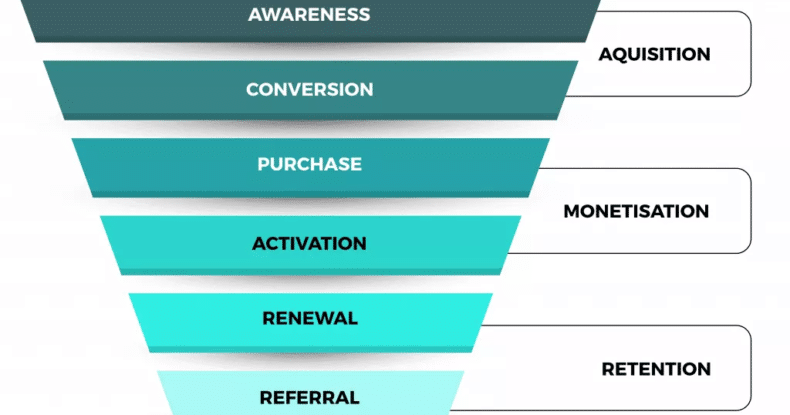What is SaaS marketing?
SaaS marketing is a type of digital marketing that concerns the promotion of subscription-based products and services. Unlike traditional marketing, SaaS marketing must also focus heavily on customer retention.
What does SaaS mean?
SaaS stands for software as a service, SaaS products are provided by ecommerce businesses via cloud-based software models. These applications are regularly maintained and updated by the provider and made available on a monthly subscription basis.
What is a SaaS marketer?
A SaaS marketer is an individual or organization that promotes SaaS products to acquire paying customers. SaaS marketers specialize in promoting SaaS brands and their products.
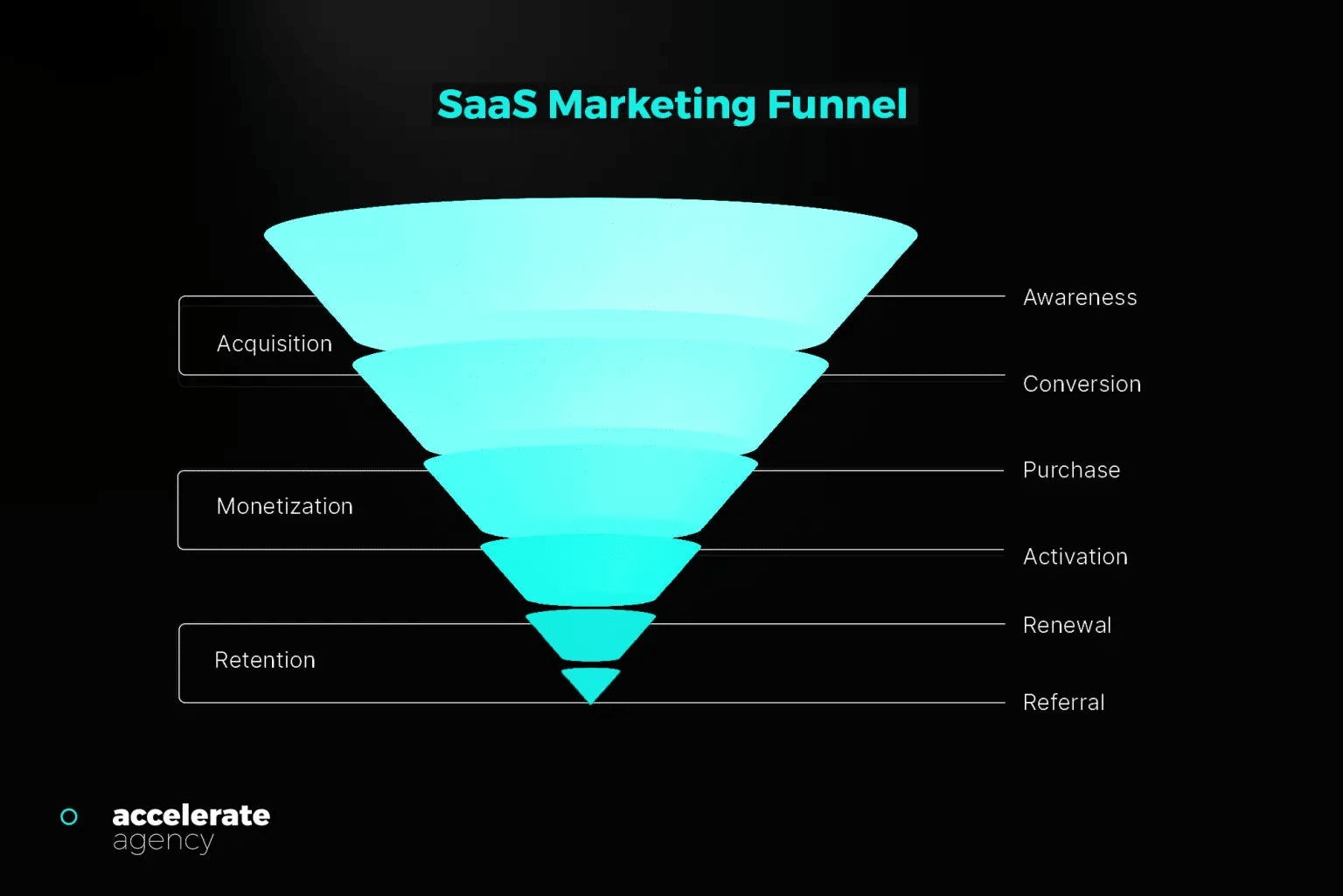
How is SaaS marketing different from other types of marketing?
SaaS marketing comes with unique necessities and challenges.
Short sales cycle
In general, the SaaS sales cycle involves providing authoritative information and usually a free trial of a service, often as part of an inbound marketing strategy. During that time, which can be as short as one or two weeks, the customer decides whether or not the product is worth the monthly fees.
Long term customers
Almost all initial customer interest is garnered from free content, freemium products, or trial subscriptions. This can cost SaaS companies a lot of cold hard cash. And customers can cancel after just a few months. But loyal, long-term customers will help the business to recoup losses and make a profit.
Selling a service more than a product
SaaS product offerings are continually updated. It’s one of the reasons customers look for those services in the first place! But SaaS relies heavily on retaining customers. It can be necessary to go the extra mile with customer service as well as continually improving products.
Information is key
When a customer begins the research process to find SaaS solutions to meet their needs, they will give more time to businesses that can quickly establish themselves as an authority in their relevant space.
Freebies and free trials matter A LOT
Adopting a SaaS product is potentially a long-term investment. This means it takes more to convince decision-makers to take the plunge and sign up for your SaaS services.
There’s no better way to convince customers than to offer free trials.
Principles of SaaS marketing
Before you can jump into SaaS marketing, you and your team must understand some basic principles.
What is a SaaS funnel?
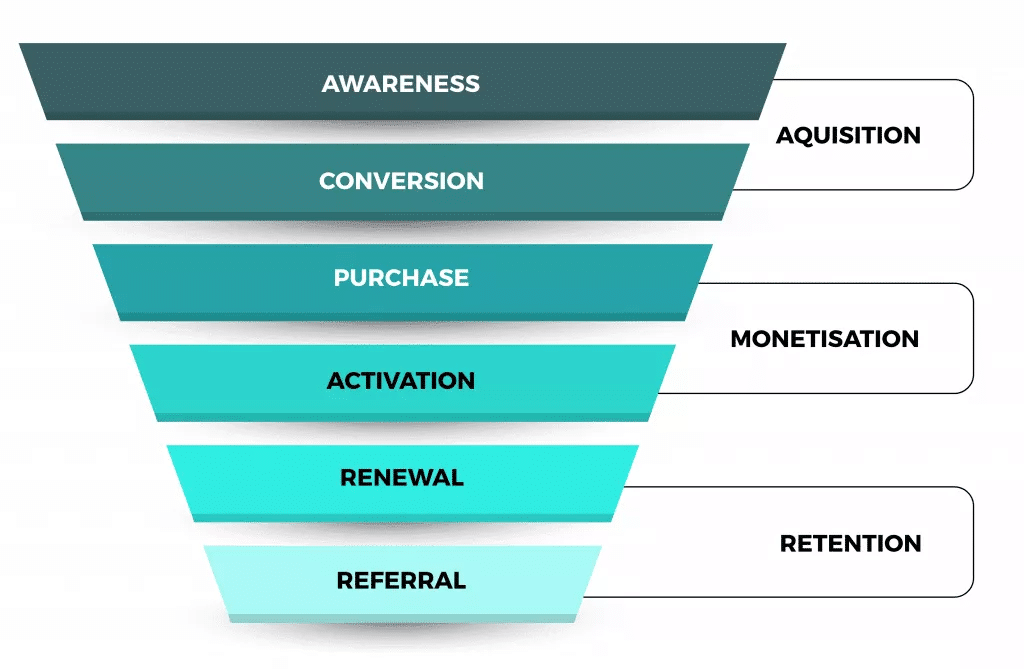
A SaaS funnel is a marketing system that consists of the various steps a potential customer must progress through to learn about your brand, try your product, and become a paying customer.
Unlike a typical sales funnel, the process doesn’t end there. In fact the funnel continues in steps to promote retention through renewals, upgrades, and eventually to gain referrals. And this is done with a combination of marketing, sales, and customer service.
Important SaaS marketing terms
Like anything else in business, you need to have the right vocabulary. Only then can you truly begin to craft your SaaS marketing strategy.
Customer acquisition cost (CAC)
CAC is what a business spends to acquire one new customer. In SaaS marketing, this is extremely important. Many times, companies spend hundreds of dollars to supply free offers and products. These costs must be accounted for when setting pricing models.
It’s best to look at CAC for a given period of time. For example, a SaaS company may spend $10,000 on a Facebook Ad campaign in January. And in that month they gained ten new customers. So, their CAC for the month would be $1000.
Customer lifetime value (CLV/CLTV/LTV)
The amount a customer will spend on your company’s products for the duration of their relationship with your business is known as customer lifetime value (CLV). Any SaaS business needs to have this number to forecast its SaaS marketing budget.
This number will be more of a guestimate for any SaaS startup. But as the business grows, and you have much more sales data, your lifetime value figures will become ever more accurate.
To calculate the CLV for your SaaS business:
Average Subscription Price X Average Customer Lifetime (Length of Subscription) / Number of Customers.
CLV: CAC Ratio
When comparing customer acquisition costs against the lifetime value of each customer, you get the CLV: CAC ratio. This ratio is invaluable to the SaaS business model.
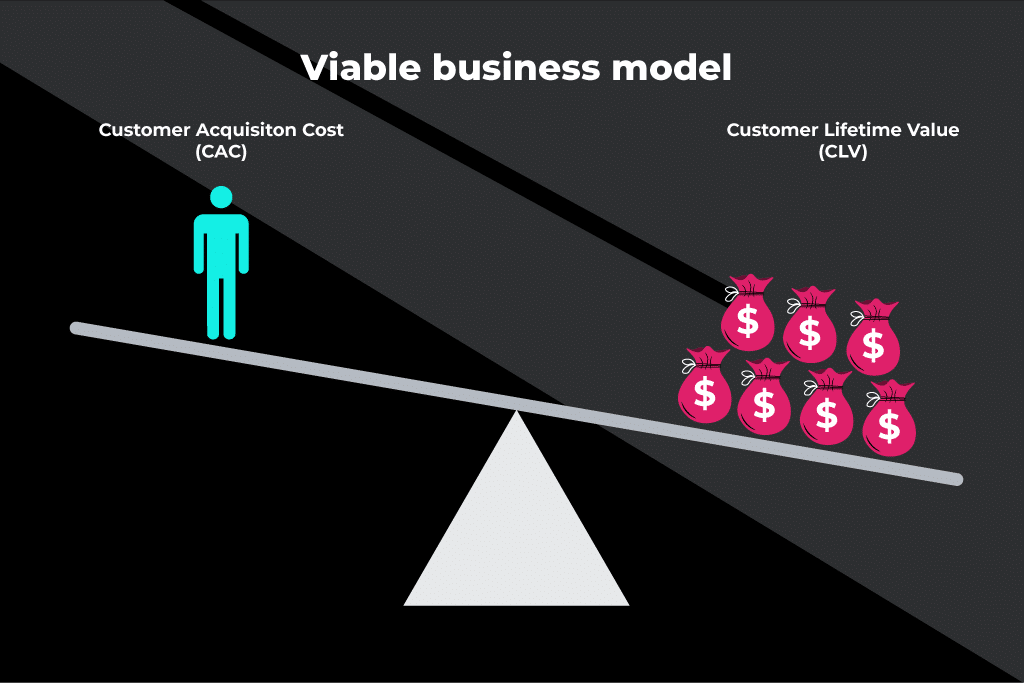
For example, let’s say a SaaS company spends $500 to acquire a new customer. If the customer lifetime value is in the range of $500, then the ratio would be 1:1. And this would be a completely unsustainable business model. In SaaS, an ideal ratio is 3:1.
Customer churn rate
We all hate to see it, but customers moving on is just part of any business. Customer churn rate is the percentage of paying customers that cancel your service for a given period of time. SaaS marketing efforts must always aim to keep this number acceptably low.
Let’s imagine a SaaS business loses 100 customers in one month. Sounds terrible right? Well, it depends on the size of their customer base. If they have 10,000 customers, they have a churn rate of 1%. But if they only have 200 paying customers left after the month, now we’re looking at a customer churn rate of a whopping 50%!
To calculate customer churn rate you:
(Total number of customer that left during given period / Total existing paying customers) X 100
SaaS marketers must find ways to not only reduce churn by increasing retention, but also counterbalance it with new acquisitions.
Net promoter score (NPS)
NPS is a widely adopted process among SaaS businesses and startups. This customer experience metric measures customer loyalty and how likely a user is to promote a product or service.
The NPS survey is simple. In fact, it just asks one question, “How likely are you to recommend us to a friend or colleague?” Customers then pick their answer from 0 to 10.
The answers are then used to categorize the respondents.
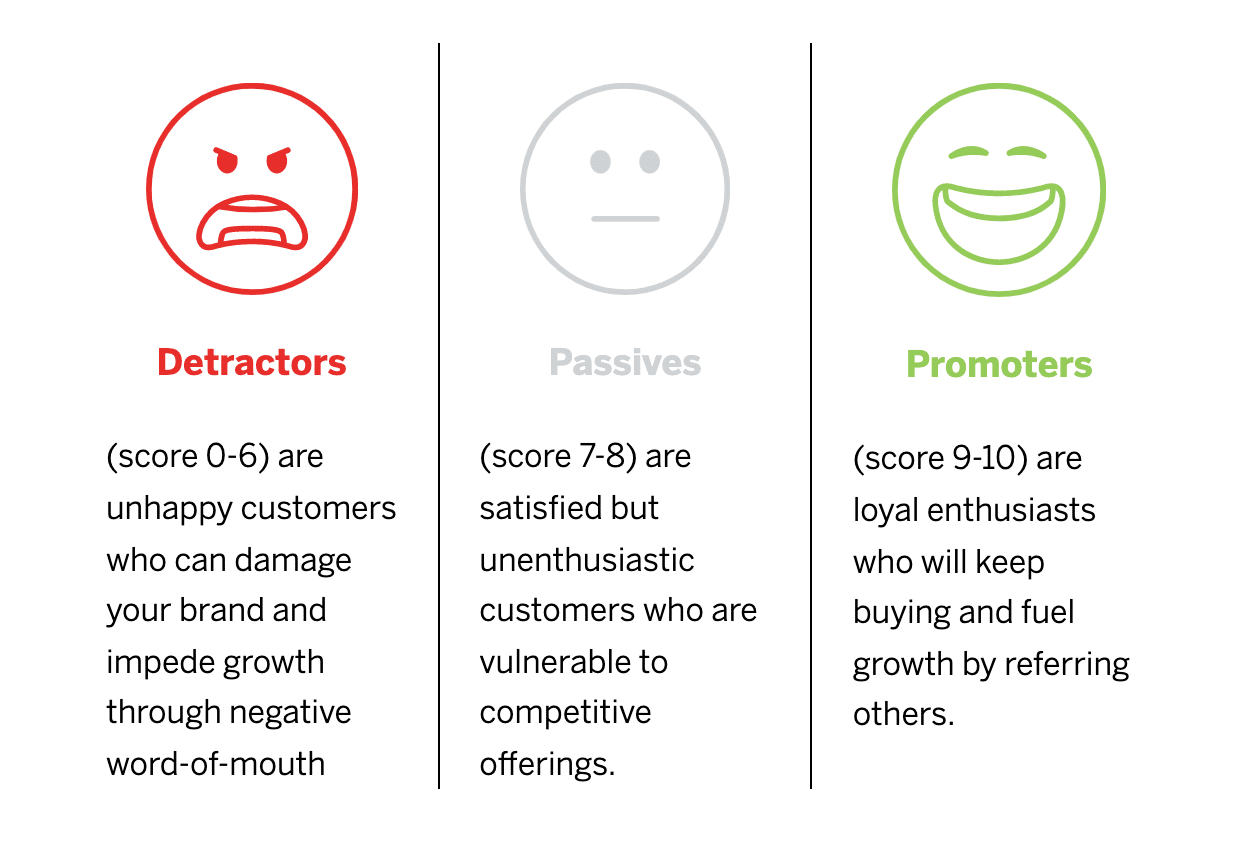
How to calculate NPS
Percent of Promoters – Percent of Detractors = NPS
You’ll notice that neutrals are not involved in calculating the score. So if we have 100 customers with 50 promoters, 30 neutrals, and 20 detractors we get:
50 promoters – 20 detractors
____________ ____________ = 30
100 customers 100 customers
Customer onboarding
The process of getting new customers up and running with your product and becoming a paying subscriber is what is known as customer onboarding.
It’s important to coax a high level of use for customers during onboarding. The more usage, the more likely they will become a paying customer. And the more likely they will keep the service for the long-term.
Monthly recurring revenue (MRR)
Monthly recurring revenue is the revenue a company can expect every month from customers. This is an especially important metric to track for SaaS because so many customers will be paying monthly.
To get an accurate MRR, make sure to prorate any flat rate payments for quarterly or annual plans. And make sure to exclude any one-time payments for installation or training fees as they will throw the calculation off.
SaaS marketing metrics
In SaaS marketing, it’s important to track all key metrics in regards to marketing spend and customer value.
Project marketing spend effectiveness
In the SaaS industry, return on investment (ROI) only arrives when the company has built a sizable user base of paying customers.
This means SaaS marketers must not focus only on the top of the sales funnel but also generate conversions like upsells and promote retention. Metrics like CAC and CLV can help businesses stay on track with marketing spend.
You don’t want to spend so much money that you can’t make any. But you also can’t afford to miss out on opportunities for quality leads. It’s a balancing act, but SaaS marketers must use historical data to help project optimal marketing spend for the future.
Channel-specific metrics
SaaS marketers will need to utilize as many marketing channels as needed. This includes websites, blogs, and social media like LinkedIn, Instagram, and Twitter.
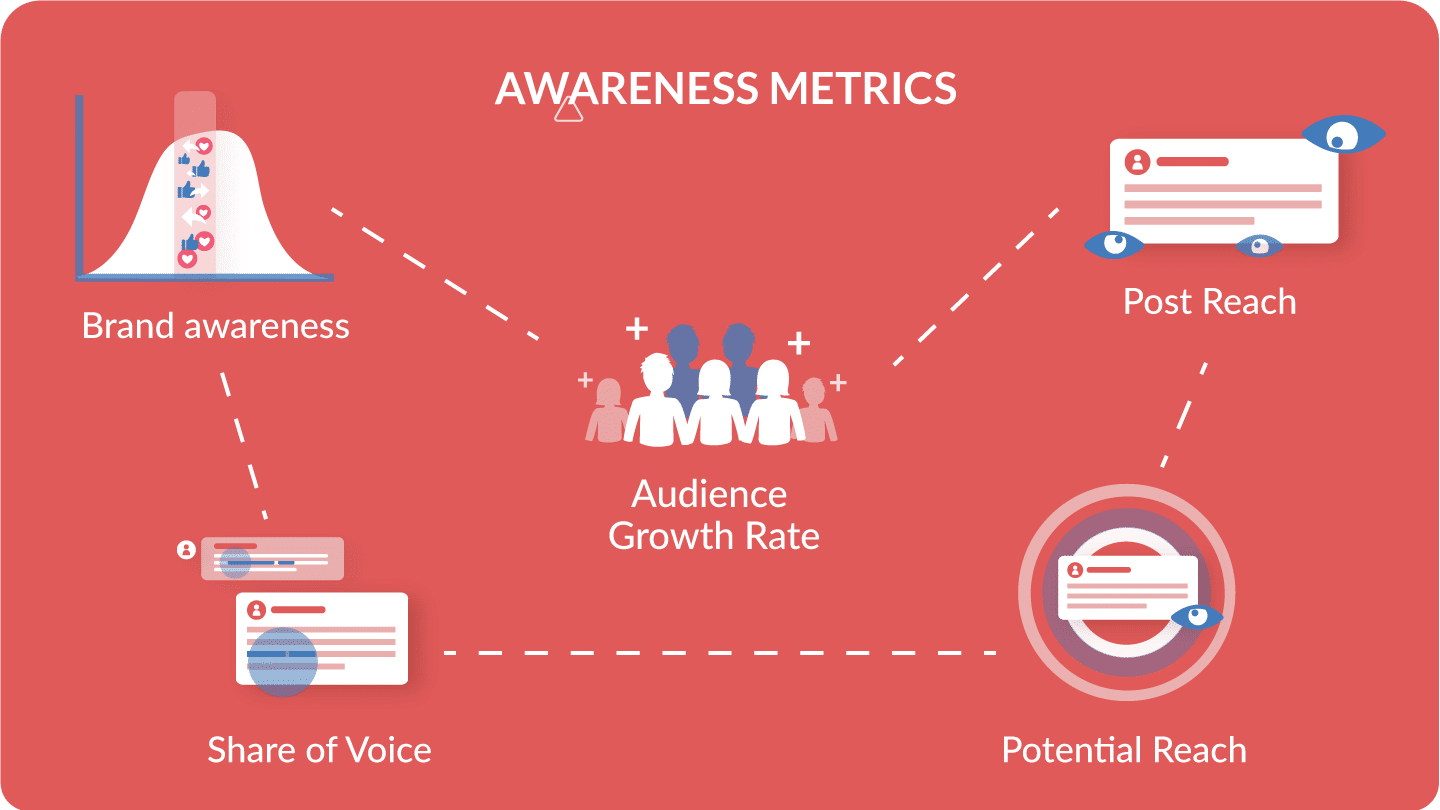
Various metrics must be tracked for each channel. In this way, marketers can discover customer pain points and what is or isn’t working. This includes metrics such as unique visitors, site traffic, and campaign analytics from places like Google Ads and Facebook Ads.
How do you do SaaS marketing?
SaaS marketing is a constant balance of acquiring new customers but keeping existing ones engaged and subscribed.
What is a SaaS marketing strategy?
A SaaS marketing strategy involves the marketing efforts of a company to sustain all areas of the customer journey. This involves attracting and nurturing leads, closing sales, and boosting customer retention
How to grow your company with SaaS marketing
To grow your business with SaaS marketing you must arm your organization with the strategies and tools for the job.
Automate sales motions
A sales motion is the general sales philosophy of an organization and the combination of actionable steps involved in the sale of its products or services. Sales motions guide your reps on how they should be selling your product.
With modern tools, sales motions can be automated. This is a highly effective growth strategy for any SaaS company. Any time marketing automation comes into play, it always saves valuable time your team can spend elsewhere!
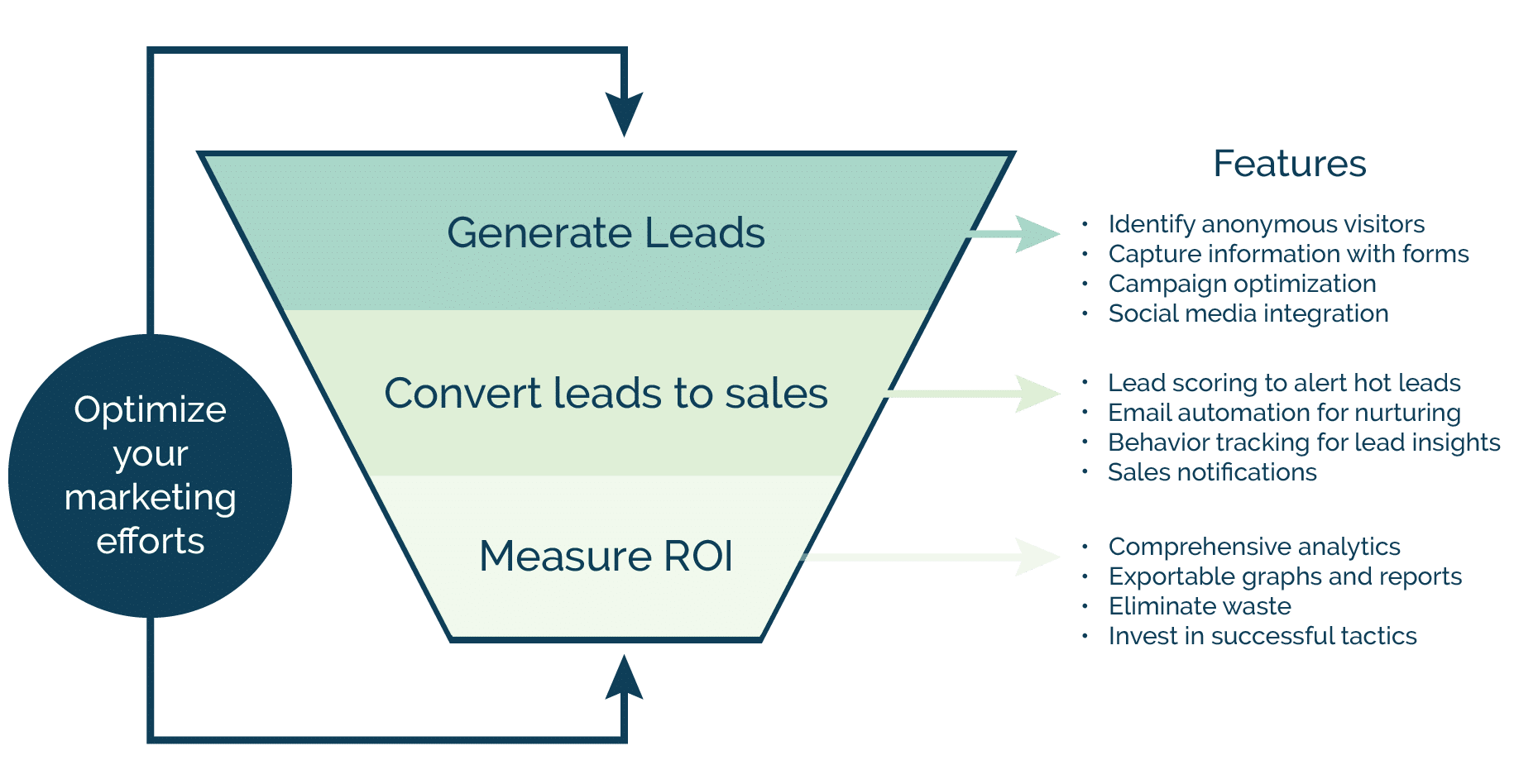
Using a tool that can integrate with a CRM like Salesforce makes this process seamless. An example would be a unique user signing up for a pdf white paper download. A customer platform tool can detect and gather that data and pass it onto the sales team for lead analysis. A simple signup form now delivers qualified leads!
Change registration flow for SaaS product purchases
When it comes to closing a sale, cart abandonment can be a serious problem. And with SaaS marketing, you have already invested a lot to get to this point, so it’s best to maximize your conversion rate!
You want to make the purchase process as smooth and painless as possible for your potential customers.
And making a change to your registration flow might just be the magic medicine that you need! Here are three easy ways to change up your registration process.
1. Keep it simple stupid!
We’ve all been there. Sometimes forms require what seems to be a solar system worth of information. Make it easy for your customer to finish the process before they change their mind!
Reduce the amount of mandatory information like company role, size, etc. Just get the necessary details to close the purchase and let your customers take the lead from there!
2. Anyone can two-step
Another way to increase your conversion rate is to make the checkout process two steps. It keeps everything nice and clean. Customers can enter their personal details on the first page, and then enter their billing details on the next, before hitting that BUY NOW button.
3. Third-party authentication for the win!
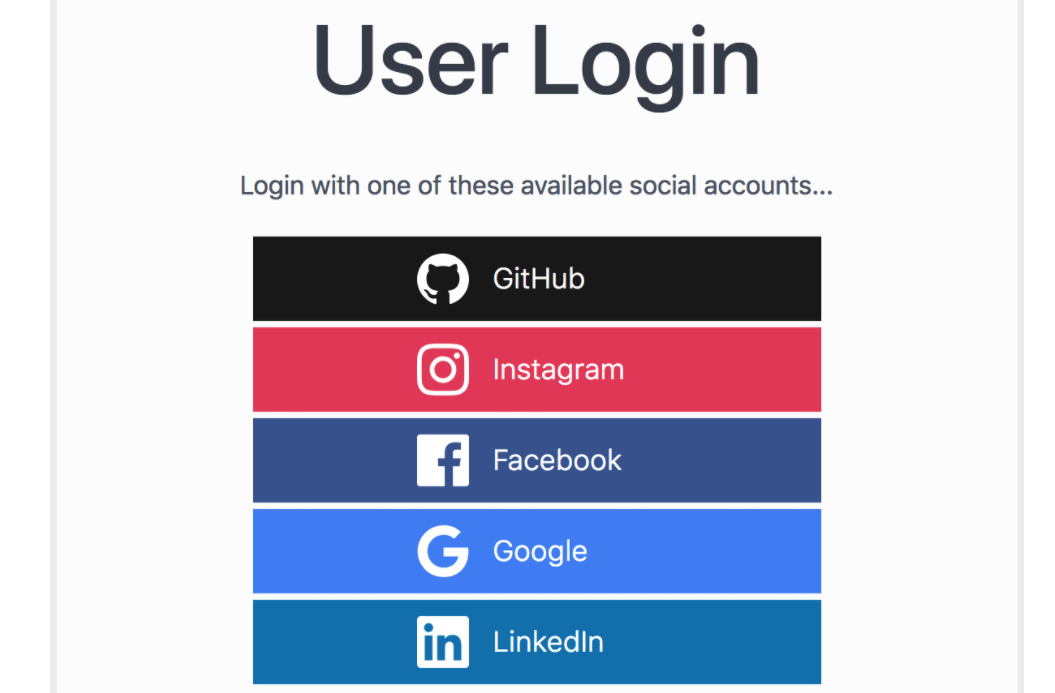
Anybody these days is already going to have account information with services like Google, Facebook, Twitter, and more! Let your customers bypass tedious forms for details and credit card information by making use of third-party authentication.
The bonus for your marketing team is that they will already have a valid and confirmed online account to use for further correspondence. And you won’t be relying on a confirmation email, which can slow down the buying process and even stop a conversion dead in its tracks.
Generate lots of SaaS content
As Bill Gates put it, “Content is King.” Blogs and other forms of software as a service content marketing help your business to find its best potential customers without them even realizing it. And quality content tops the bill when it comes to Google ranking factors.
For example, a useful blog post on how to eliminate mic echo may help a user to discover your SaaS product for making HD VoIP calls. Or a listicle for the best headsets can lead to a business trialing your call center solution!
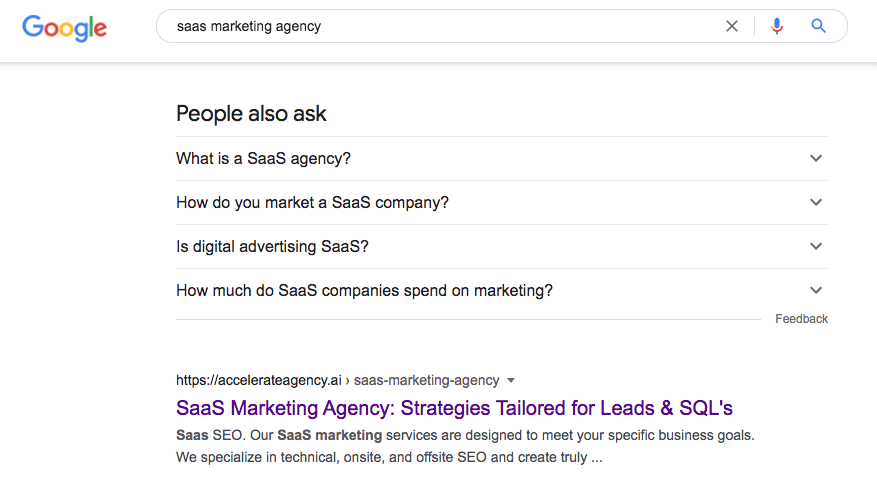
It’s always a good idea to write about what people are searching for in your niche, and you can find this out quite easily with Google’s “People also ask” section.
Offer content with real value that isn’t sales-y. And make it easily scannable so that anyone who visits your page can find exactly what they’re looking for within seconds.
If you want to provide high-quality content, then it helps to make use of visuals. Videos, infographics, charts, UI images, screenshots, and more provide much-needed context, but also demonstrate value to the reader.
With a content marketing strategy from places like an enterprise SEO company, you could get a gap analysis, content mapping, audience insights, and more. And this includes content creation for both onsite and offsite to fuel your sales funnel from the top.
Aim towards product-led growth
Your SaaS company has put a lot into your product, so let it do its thing! Unlike a traditional sales cycle, most SaaS customers are not looking to spend time with education and training on what a product does and how to use it.
Instead, SaaS customers are looking to get their hands on the product and try it out for themselves. A SaaS marketing strategy should include at least one freemium offering or free trial.
During this phase of free use, your potential customers will be onboarding themselves. They’ll see what the product can do for them and know whether the monthly fee is worth their money. In other words, your product is now selling itself. The free product can be the final closer.
With product-led growth, your business can invest more resources into other areas of the sales funnel, like generating and nurturing quality leads, and customer retention.
How to put together an effective SaaS marketing strategy
An effective SaaS marketing plan consists of several components.
Understand the SaaS customer journey
An effective SaaS marketing strategy can have a lot of moving parts. So it’s important to keep your eye on the ball, or in other words, your ideal customer.
The SaaS customer journey begins with an attempt to find a solution to a problem. These customers want a real solution now, and they are willing to spend some time looking for it.
Today, there’s an endless supply of SaaS offerings for any potential customer to wade through. Just in the past year, the marketing technology landscape saw a growth of 13.6%
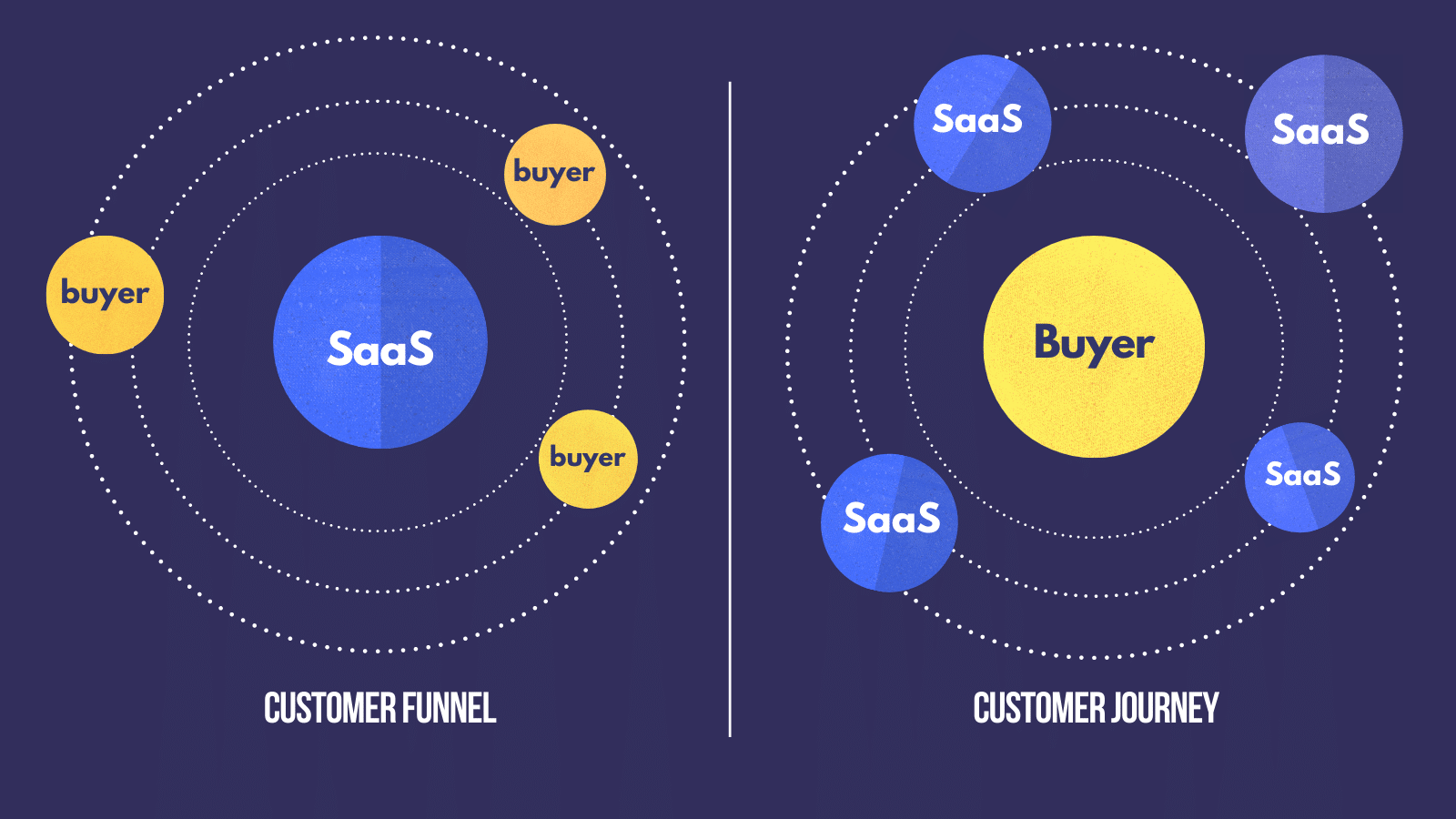
As soon as a buyer begins looking for a solution online, they’re likely to be overwhelmed by their purchase options. For larger or enterprise B2B customers, it comes down to a varying number of committees and decision-makers before selecting a service provider.
Just look at this flow chart from Gartner on the buyer journey. Are you confused yet? The SaaS buyer’s journey can oftentimes be a painful process for the purchaser itself. Effective SaaS marketing is well aware of this and makes the process as easy as possible.
Scout the competition
You can’t create an effective marketing plan until you know what you’re up against. Use Google Analytics to find the top competitors for the relevant search terms in your niche. Visit their website, blog, and landing pages. Attend SaaS conferences and scope out the competition and new tech that could be good opportunity for your company.
Look for their social media presence or lack thereof. Any good marketing strategy will involve focusing on the buyer personas for which your services beat out your competitors, either in features or price point.
5 SaaS marketing strategies
When it comes to building an effective SaaS marketing strategy, go with the bread and butter of proven marketing tactics.
Email marketing
Email is a huge component of any outbound marketing campaign, but it can also help to nurture leads acquired from other sources. Automated email templates with a service like MailChimp facilitate personalized touchpoints with your existing customers.
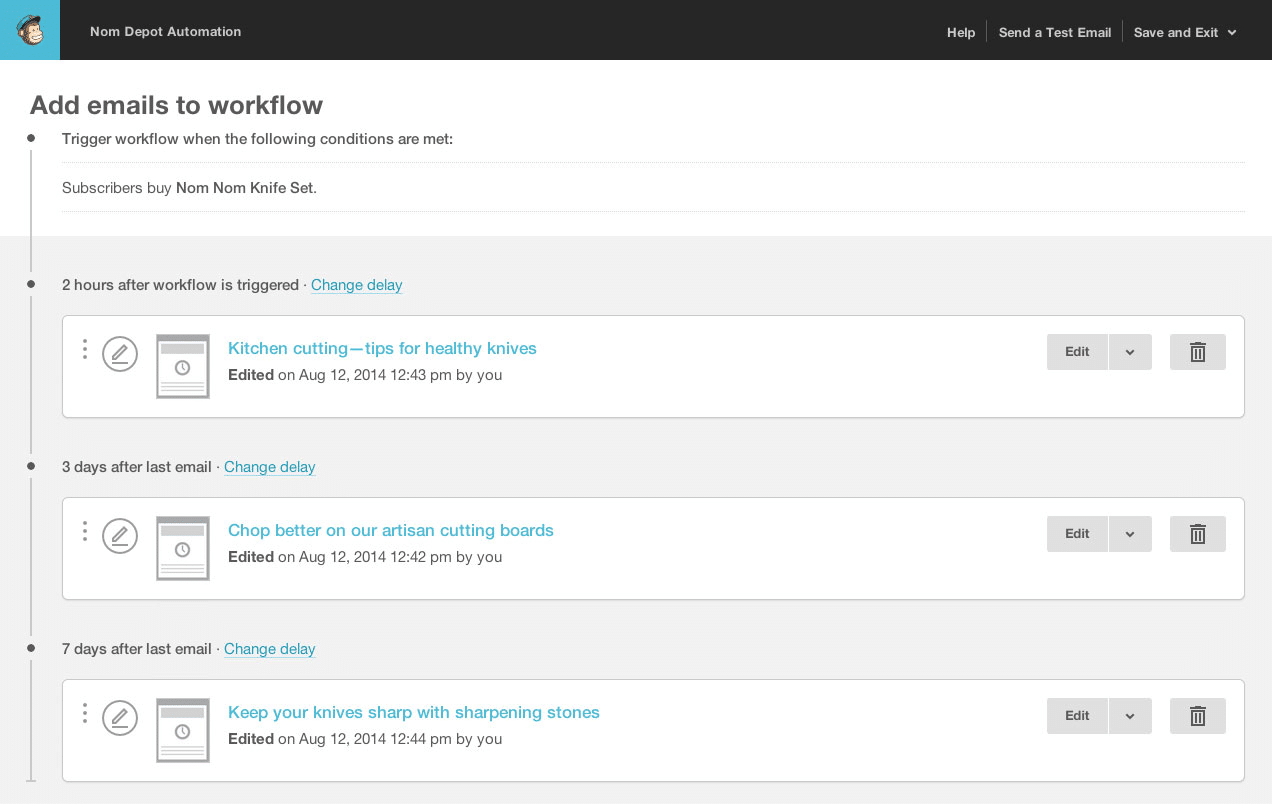
Remember those? The ones you hope to keep around for a long time? Email marketing is a great tool to service those customers with new feature announcements, onboarding, quality content, surveys, and more.
And for those nearly half of SaaS customers that only use a product less than once a month, email can be the nudge they need to get using again.
SEO
It doesn’t really matter what you’re selling if no one can find you. Without a well-planned SEO strategy, your business might as well be invisible. And according to a recent report, organic search accounts for up to 77% of the traffic to the biggest SaaS company websites!
Do your keyword research. Get your team or find a SaaS marketing agency to craft quality content for your website. Create FAQs, knowledge bases, blog posts, videos, podcasts, and more. But the key to keyword ranking is always quality over quantity.
Webinars
Webinars are great opportunities for you to engage with your potential and existing customers. It’s a chance for company reps to nudge leads down the SaaS funnel by giving out useful tips and advice.
You can also save all of your webinars to upload as part of your YouTube channel. This actually helps to improve your organic traffic as YouTube is the second largest search engine in the world! That’s two birds with one stone!
PPC and social ads
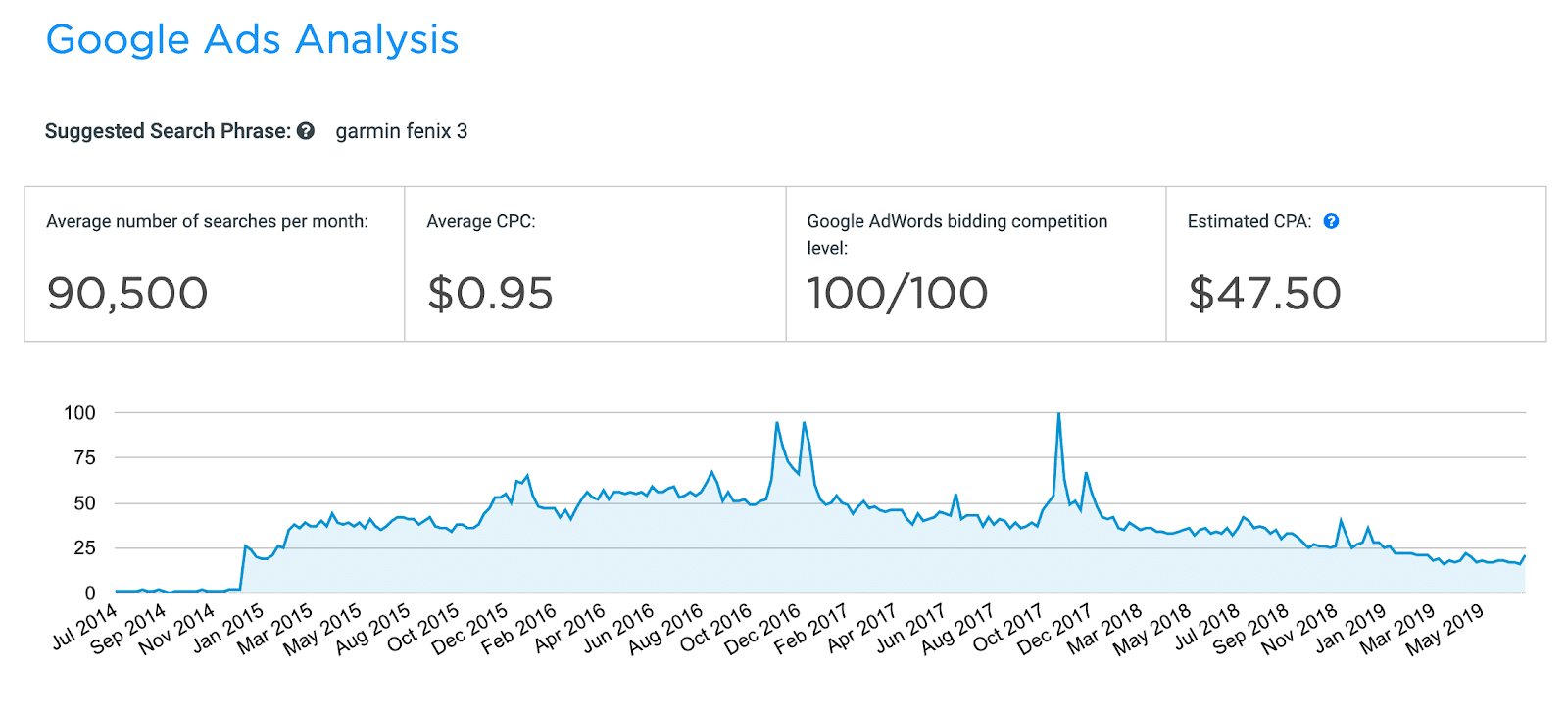
Pay-per-click (PPC) with the likes of Google Ads and Facebook Ads are well proven in digital marketing. And if you do some digging with either platform’s analytics, you will be able to get valuable buyer persona and behavior insight. This streamlines the process of optimizing your marketing campaigns.
With social ads, look for influencers that speak to your audience. Ads can be part of your general content, or a chance to let influencers promote your product on their channels.
Organic social media
If your SaaS company isn’t on social media you’re well behind the curve. Use marketing tools to monitor your mentions and engage with all of your audience. It’s a great place to speak back and forth directly with potential and existing customers.
Marketing can also create posts to announce new products or features and promote blog posts and other funnel driving content. Social platforms like LinkedIn let your brand build an authoritative voice. But perhaps just as valuable, it gives your company a chance to show its fun and human side.
Get your priorities straight
Focus on the most important channels and then expand naturally. Always start by building quality content for your website before moving on to things like YouTube and social media.
Streamline communication with leads and customers
Again, remember that as a SaaS company part of your offering involves a service. This means that your customer expects service promptly when they need it.
Don’t keep leads and paying customers waiting. When they get in touch, it’s important to respond as soon as possible. Have a customer communications strategy and make use of omnichannel tools that will let your team track and respond to customers quickly.
Curate reviews and testimonies
Social proof and word-of-mouth can be invaluable sources of new leads for your business. Get your SaaS product on third-party review sites. And use touchpoints like automated emails to gently ask for product reviews.
Some 92 percent of customers are more likely to buy a product after reading a trusted review. As a SaaS business, it is prudent to get your company reviews on trusted sites like Gartner, G2 Crowd, and Trustpilot to promote your business.
Generate content for the top of the funnel
Because the SaaS customer journey can take months or more, it’s important to always generate new leads. And that starts by fueling the top of the funnel.
Blog posts, case studies, videos, and podcasts are great ways to drive organic traffic to your landing pages. And these types of content can also be linked to on all your social media accounts to widen your reach!
Ensure painless demo sign-ups
Don’t create any obstacles for your customer to get up and running with your free demo. Make your demo CTAs clear on your landing and sales pages so any visitor can find them with ease.
Also be sure to make it very clear how long the trial is, any future payment information, and the limitations of the trial product.
Have an effective pricing structure
First things first, make sure your freemium offering isn’t so packed with features that no one will ever fork over their cash!
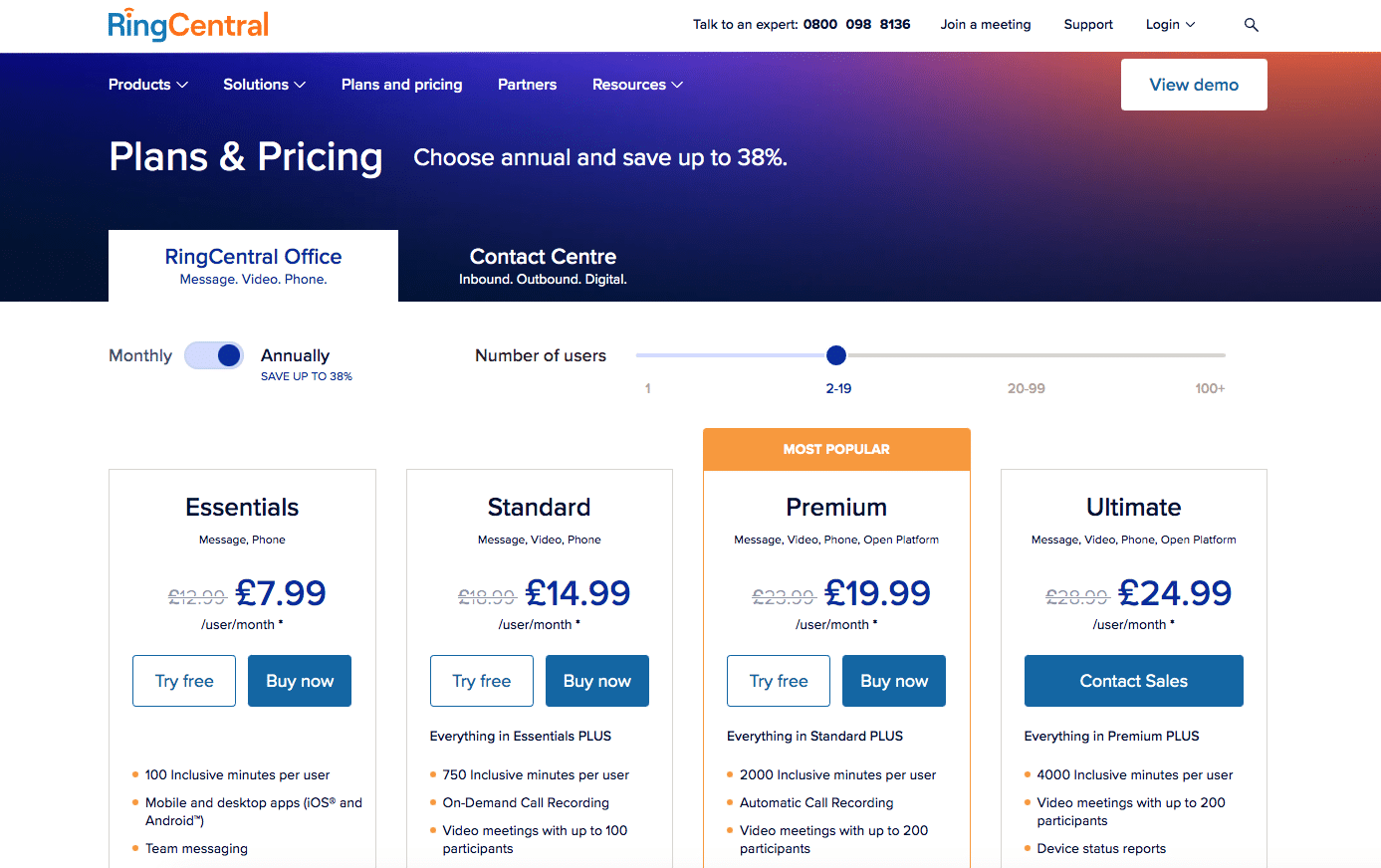
Next, have an easy-to-find pricing plan comparison page. This should be simple and hit on the most important aspects, with links to open up more detail. Always be as clear as possible with what each plan does and does not include.
Build your unique brand
Dealing with cloud-based software doesn’t always ooze with hipness. And it can be hard to stand out from the crowd. But don’t disregard the brand logo or your website design.
You can use any content for website, blog, or social media to display your brand voice. This can be the way your company interacts with its audience and also with displays of the company values and culture.
How to launch a SaaS product
You have your SaaS marketing strategy, now it’s time to launch your service!
Build your audience
Nothing is more important than building up and maintaining your subscriber base. It starts with creating a website and blogging. During this time, you’ll not only build trust and loyalty with potential customers but actual fans of your brand and products.
Generate product hype
As your audience grows, it’s time to ramp up the hype factor. Use social media and your email newsletters to drip information slowly. Let the anticipation build but always stay in touch.
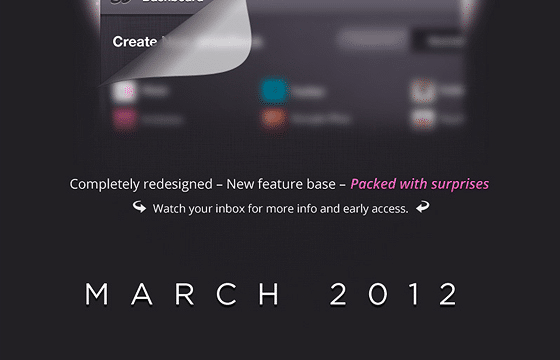
And never come across as selling your product. Focus on the problems it will solve.
Early access list
As hype begins to generate, you can build exclusively with an early access signup form. This can be done via email marketing or content linking to a landing page. It will be on a first come first serve basis, and will signal to your marketing team who some of your most interested leads are.
Try sweetening the deal by throwing in ebooks, informational videos, or promotions to encourage early sign-ups.
Nurture sign ups
Once potential customers sign up, they should receive constant marketing and messaging. Otherwise, their excitement will begin to fizzle out before launch day.
Consider automated and scheduled emails for each signee. The emails can cover topics like product benefits, case studies, current progress, testimonials, and much more.
Don’t monetize too early
Just remember, initially, you aren’t selling anything. It’s all free content, and you can’t suddenly go from free to paid-only!
A successful SaaS marketing launch strategy will offer a freemium model. This will help to keep the largest portion of your pre-launch audience’s attention and give you more time to nurture those leads into paying customers.
How to get started with SaaS marketing
You need the right strategy and the right tools to get your SaaS product off the ground.

Sufficient information about the platform
Make sure you put content online that demonstrates all the important information about your SaaS platform. At accelerate agency, we handle all of your SaaS content marketing to make sure your brand reaches your target audience.
Offer free trials
Be ready to let your product speak for itself. Have clear CTAs for trial sign-up on your homepage and any sales or landing pages.
Website optimization
Your website will need to be optimized for organic search and for content. This will be the backbone of your lead generation and the main source of traffic.
Social media presence
You must build a presence on social media channels like Instagram, Twitter, and Facebook. You can use targeted ads and crosslink posts to drive traffic to your curated marketing content and boost your SaaS linkbuilding strategies
Let your SaaS product sell itself
At the end of the day, people have got problems and your product can solve those problems. Let your SaaS product sell itself.
Originally published Jan 24, 2021, updated Feb 25, 2023
